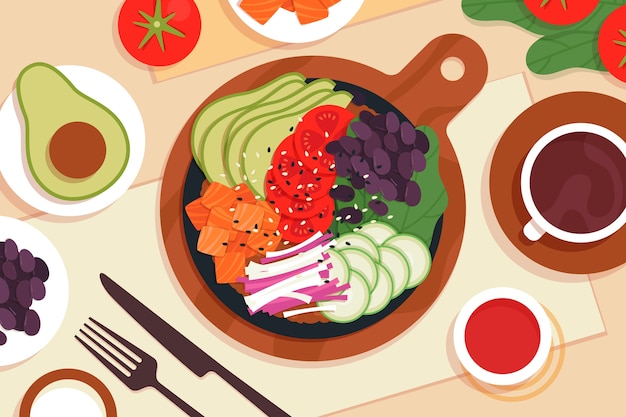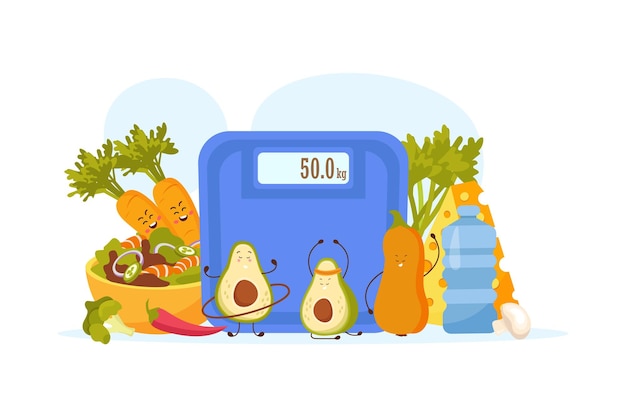Maintaining a healthy weight is often a goal for many individuals, but determining the right portion sizes can be challenging. What and how much you eat can have a significant impact on your weight loss journey. To provide some guidance, we have prepared guidelines from well known dietitians, to create a simple portion guide. In this blog post, we will explore the recommended portion sizes for different goals, whether it’s losing weight, maintaining weight loss, or building muscle.

The Importance of Balanced Portions:
Before delving into specific portion recommendations, it’s crucial to understand the importance of balanced portions. It is emphasized the inclusion of various foods in your meals to achieve a good balance. Vegetables, in particular, should always be a part of your lunch and dinner, with a recommendation of at least 3 deciliters for each meal. Additionally, incorporating different varieties of raw and cooked vegetables can enhance both nutrition and variety in your diet. Including one to three servings of fruit per day is also recommended, provided it fits within your daily calorie allowance.
Goal 1: Weight Loss
If you find yourself overweight and aiming to shed those extra pounds, here are some portion recommendations:
Vegetables: Make sure half of your plate consists of vegetables. Aim for at least 3 deciliters for both lunch and dinner.
Protein: Allocate approximately a quarter of your plate to protein sources such as meat, chicken, eggs, or vegetarian alternatives. A benchmark could be 100 grams of cooked weight.
Carbohydrates: Opt for options like potatoes, pasta, rice, or bulgur, preferably whole grain alternatives. This portion should also account for a quarter of your plate, equivalent to two medium-sized potatoes or around 1 to 1.5 deciliters of cooked pasta or rice. Exclude bread from this meal.
Goal 2: Weight Maintenance after Loss
If you have recently achieved weight loss and want to maintain it, follow these portion recommendations:
Vegetables: Allocate just over a third of your plate to vegetables, which amounts to approximately 3 deciliters for both lunch and dinner.
Protein: Dedicate a quarter of your plate to protein sources, as mentioned earlier.
Carbohydrates: Similar to the weight loss goal, carbohydrates should constitute a quarter of your plate. Choose whole grain options and adjust the portion size accordingly. Depending on your calorie needs and activity level, you may include bread in this meal.
Goal 3: Building Muscle without Weight Loss
If your aim is to build muscle without losing weight, consider the following portion recommendations:
Vegetables: Reserve a quarter to a third of your plate for vegetables.
Protein: Like the previous goals, allocate a quarter of your plate to protein sources.
Carbohydrates: This portion should make up slightly more than a quarter of your plate. Aim for approximately three medium-sized potatoes or around 2 to 3 deciliters of cooked pasta or rice. You can supplement this with a slice of wholemeal bread or a couple of slices of hard bread.
Finding the right portion sizes for your weight management goals is a personal journey. By following the general guidelines provided by registered dietitian Anna Hägg, you can create balanced meals tailored to your specific objectives. Remember to adjust the portion sizes based on your individual calorie needs and level of physical activity. Ultimately, adopting healthy eating habits and maintaining portion control can support your weight management efforts and overall well-being.

